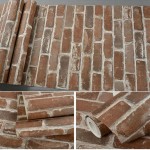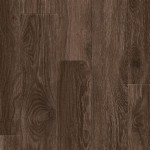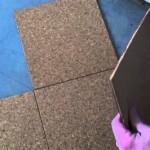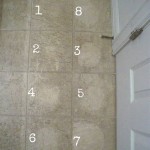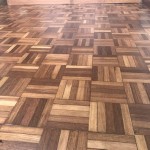What Are The Disadvantages of Hardwood Flooring?
Hardwood flooring is a popular choice for homeowners seeking aesthetic appeal and durability. Its natural beauty and potential for long-term value are undeniable. However, despite its advantages, hardwood flooring also presents several disadvantages that prospective buyers should carefully consider before making a decision. These drawbacks range from cost and maintenance concerns to environmental impact and suitability for certain environments.
Cost Considerations and Installation Complexities
The initial cost of hardwood flooring is often significantly higher than alternative options such as laminate, vinyl, or carpet. The price per square foot for hardwood materials can vary widely depending on the species of wood, its grade, and the manufacturer. Exotic hardwoods, such as Brazilian Cherry or Ipe, typically command a premium price compared to domestic options like oak or maple. Furthermore, engineered hardwood, while often more dimensionally stable, can still be a substantial investment.
Beyond the material costs, the installation of hardwood flooring can also contribute significantly to the overall expense. While some experienced DIY enthusiasts may attempt a self-installation, professional installation is generally recommended, particularly for solid hardwood. Incorrect installation can lead to a multitude of problems, including uneven surfaces, gaps between planks, and squeaking. Professional installers possess the necessary tools and expertise to ensure a proper and durable installation, but their services come at a price.
The subfloor preparation is another crucial aspect of hardwood flooring installation that can add to the cost. A level and structurally sound subfloor is essential for a successful installation. If the existing subfloor is uneven, damaged, or otherwise unsuitable, it may need to be repaired or replaced before the hardwood flooring can be installed. This can involve additional labor and material costs, further increasing the overall project budget.
Furthermore, homeowners should factor in the cost of necessary accessories and finishing materials. These can include underlayment, vapor barriers, adhesives, stains, sealants, and finishing coats. The type and quality of these materials can impact both the appearance and the longevity of the hardwood flooring. Skimping on these essentials to save money can ultimately lead to premature wear and tear, necessitating costly repairs or replacements in the long run.
Maintenance Demands and Susceptibility to Damage
Hardwood flooring requires regular maintenance to preserve its appearance and prolong its lifespan. Unlike some flooring options that are relatively low-maintenance, hardwood is susceptible to scratches, dents, and water damage, necessitating a proactive approach to care and upkeep.
Regular sweeping or vacuuming is essential to remove dirt, dust, and debris that can scratch the surface of the flooring. Hardwood floors should be cleaned with a damp mop using a cleaner specifically designed for hardwood. Avoid using excessive water, as this can seep into the seams and cause warping or staining. Spills should be cleaned up immediately to prevent permanent damage.
Hardwood floors are susceptible to scratches from furniture, pets, and foot traffic. Using felt pads under furniture legs can help to prevent scratches. Pet owners should trim their pets' nails regularly to minimize scratching. High-traffic areas may benefit from the use of area rugs to protect the flooring from wear and tear. Furthermore, avoiding shoes with high heels or cleats on the hardwood floor can significantly reduce the risk of dents and scratches.
Water damage is a significant concern for hardwood flooring. Exposure to excessive moisture can cause the wood to swell, warp, or even rot. Hardwood flooring is generally not recommended for bathrooms, laundry rooms, or other areas with high humidity or potential for water leaks. In the event of a water spill or leak, it is crucial to dry the affected area immediately and thoroughly to prevent permanent damage.
Sunlight can also fade or discolor hardwood flooring over time. Prolonged exposure to direct sunlight can cause the wood to lighten or darken, creating an uneven appearance. Using curtains, blinds, or UV-resistant window film can help to minimize the impact of sunlight on the flooring.
Refinishing may be necessary every few years to restore the appearance of hardwood flooring that has become scratched, worn, or faded. Refinishing involves sanding down the existing finish and applying a new coat of stain and sealant. This process can be messy and time-consuming, and it may require temporarily vacating the premises. The cost of refinishing can vary depending on the size of the area, the type of finish used, and the contractor's fees.
Environmental Impact and Sustainability Concerns
The environmental impact of hardwood flooring is a growing concern for environmentally conscious consumers. The harvesting of trees for hardwood flooring can contribute to deforestation, habitat loss, and climate change. However, the extent of the environmental impact depends on the sourcing practices of the flooring manufacturer. Sourcing sustainable and responsibly harvested hardwood can mitigate some of these concerns.
The use of certain finishes and adhesives in hardwood flooring can also have environmental implications. Some finishes contain volatile organic compounds (VOCs), which are released into the air and can contribute to air pollution and health problems. Choosing low-VOC or VOC-free finishes can help to minimize these risks. Similarly, some adhesives contain formaldehyde, a known carcinogen. Look for formaldehyde-free adhesives when installing hardwood flooring.
The transportation of hardwood flooring can also contribute to its environmental footprint. Shipping wood from distant locations consumes fuel and generates greenhouse gas emissions. Choosing locally sourced hardwood can reduce the transportation distance and minimize the environmental impact.
Consideration must be given to the end-of-life disposal of hardwood flooring. Hardwood flooring can be recycled or reused, but it is not always easy to do so. Many landfills do not accept wood waste, and the process of recycling hardwood can be complex and costly. Reusing hardwood flooring in other construction projects is a more sustainable option, but it requires careful deconstruction and preparation.
Choosing certified sustainable hardwood flooring is one way to minimize the environmental impact. Organizations such as the Forest Stewardship Council (FSC) certify wood products that meet specific environmental and social standards. FSC-certified hardwood flooring comes from forests that are managed responsibly and sustainably.
Noise Transmission and Comfort Factors
Hardwood flooring is known for transmitting sound more readily than softer flooring options like carpet or cork. This can be a drawback in multi-story homes or apartments where noise transmission between floors can be a nuisance. Footsteps, furniture movement, and other noises can be amplified by hardwood flooring, disturbing occupants in adjacent rooms or floors.
Adding an underlayment beneath the hardwood flooring can help to reduce noise transmission. Underlayment materials such as cork, foam, or rubber can absorb sound and dampen vibrations. The effectiveness of the underlayment depends on its thickness and density. Choosing a high-quality underlayment can significantly improve the sound insulation properties of hardwood flooring.
Hardwood flooring can feel hard and cold underfoot, particularly in colder climates. This can be uncomfortable for some people, especially during the winter months. Using area rugs can help to provide warmth and cushioning underfoot. Radiant floor heating can also be installed beneath hardwood flooring to provide consistent and comfortable warmth throughout the room. However, the addition of radiant heating will add to the installation cost.
The hardness of hardwood flooring can also be a concern for people with joint pain or mobility issues. The lack of cushioning can exacerbate existing conditions and make it difficult to walk or stand for extended periods. Softer flooring options like carpet or cork may be more suitable for individuals with these concerns. Using supportive footwear can also help to alleviate discomfort on hard surfaces.
The acoustics of a room can be affected by hardwood flooring. Hard surfaces tend to reflect sound waves, which can create echoes and reverberation. This can be particularly noticeable in large, open rooms with minimal furnishings. Adding soft furnishings such as curtains, rugs, and upholstered furniture can help to absorb sound and improve the acoustics of the room.

10 Major Disadvantages Of Engineered Wood Flooring An Hardwood Floors Guide Reallyfloors America S Est

5 Pros And Cons Of Wooden Flooring Sdhome Guide

5 Pros And Cons Of Wooden Flooring Sdhome Guide

Advantages And Disadvantages Of Wooden Flooring In Chennai Deejos Engineers

Engineered Hard Wood Flooring Advantages And Disadvantages

Pros And Cons Of Dark Vs Light Hardwood Floors

Disadvantages Of Timber Flooring Floor Installation

Disadvantages Of Laminate Wood Flooring Key Drawbacks

Wide Plank Wood Flooring Benefits And Drawbacks Aa Floors

Pros And Cons Of Hardwood Flooring Checkatrade



